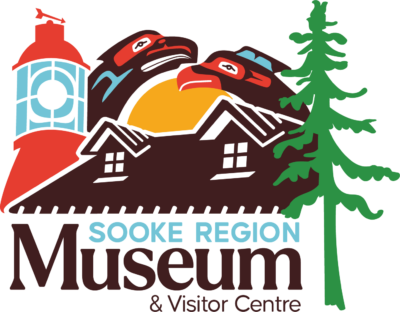DONATING
Artifacts, archives, photos
Thank you for considering the Sooke Region Museum for your donation!
We appreciate and value all donations that come through our door. However, there are guidelines we follow so we can best serve people of the Sooke Region.
Our collection rapidly expanded in 1970s and 1980s when the Museum first opened. We are currently undergoing an extensive deaccessioning process to ensure we are able to continually add new donations to the collection. Our resources to care, preserve, and display donations are limited and that is taken into account when we accept new donations.
If you are interested in donating an artifact or photos to the Museum, please familiarize yourself with our process and ensure your donation meets our criteria.
We kindly ask that any items that were not used in the Sooke Region or do not have Sooke Region history attached to it not be brought in for donation. We collect and accept donations based on our mandate and vision. Donations that fall outside of it will not be accepted.
FAQs of Donations
1. What is the Sooke Region Museum’s mandate and vision?
Mandate
a. To gather and preserve information, records and objects of educational, historical and cultural value associated with the area, and without limiting the generality of the foregoing.
b. To establish and maintain a museum for the purpose of preserving, recording and exhibiting for public enjoyment such material.
c. To support the development of the arts through exhibition, presentation, performance, commission, development and production.
Vision
To be a community museum that makes a difference … improving the lives of residents and visitors to the Sooke Region.
2. What is the Sooke Region?
The Sooke Region consists of the communities: East Sooke, Sooke, Otter Point, Shirley, Jordan River, and Port Renfrew. As well, we help tell the stories of the Scia’new, T’Sou-ke, Pacheedaht Nations. The Sooke Region also consists of the waters and lands between these communities.
3. How do I know if I should donate an item?
Questions you should ask yourself:
- Does this object provide authentic evidence of the Sooke Region’s history?
- Is it rare or considered a treasure of the Sooke Region?
- How can it contribute to the story of the Sooke Region?
To preserve and interpret history and advance our understanding of the Sooke Region, we only accept items that support this vision while factoring in our limited resources.
4. What kind of items are accepted?
We will accept just about anything related to human or natural history. Our goal is collect a wide array of items to tell a comprehensive Sooke Region history.
5. What kind of items are not accepted?
We will not accept:
- Items containing food and/or liquid
- Firearms
- Human Remains
6. Will my donation go on display?
We cannot make any guarantees about new donations going into exhibits. When we design new exhibits, we consider the thousands of items we have in the collection. Often, we choose items that best represent the history we are depicting, that may or may not be your donation. Every donation enriches our understanding and knowledge on the history of the Sooke Region. Your donation may help in other ways like assisting a researcher in the quest to find information!
7. How long does a donation take?
It depends on what you are donating. In any case, plan for 10-15 minutes when donating. This can change depending on how much you are donating, and how much information you have on the items.
8. Do I need to make an appointment for a donation?
Yes. It is not required, but we strongly encourage everyone to reach out to our Collections Manager before coming in to donate. Our Collections Manager will review the collection, and consider our resources to accept the item. This can be done before you come in, and it might save you a trip if we do not accept your donation. If you walk-in with a donation, please give yourself more time since this will have to be at the time of the donation.
9. What happens when I donate an item?
During the donation:
We will ask you questions regarding the donation like: who used it, where was it used, how was it used, etc. There is a short form that needs to be filled out as well.
After the donation:
The Collections Manager accessions the donation and gives it a unique number to identify in our collections database. Then, it is catalogued (which includes description, images, measurements, etc.) and the information is inputted into our database. Depending on it’s condition, it may be cleaned. Lastly, it will go into storage. From time to time, the item may be considered for an upcoming exhibit, it may go into an exhibit, a researcher might request to see it, among many other things.
Please ensure you have the legal rights to donate the items. The Museum has the right to refuse any donation with questionable provenance (record of ownership).
Duplicate Items at the Museum
The following list contains items which the museum has multiple of and are most likely to not be accepted as a donation:
- Soldering irons
- Axes and saws (all types)
- Chains, hooks, ropes, nets
- Augers
- Pianos
- Axles, wheels, wheel rims
- Logging blocks, pulleys
- Whippletrees, yokes, horse tethers
- Tins (tobacco, medicine, spice, food, etc.)
- Bottles (pop, beer, wine, juice, medicine, etc.)
- Jars, glasses, cutlery, dishes (especially fine china-porcelain)
- Looms, textile notions (sewing, knitting)
- Glass insulators
- Doilies, tablecloths, runners, handkerchiefs, common household textiles
- Boxes, crates, trunks, suitcases
- Sewing machines
- Phones
- Cameras
- Typewriters
- Radios
- Books (fiction, non-fiction, schoolbooks, bibles)
